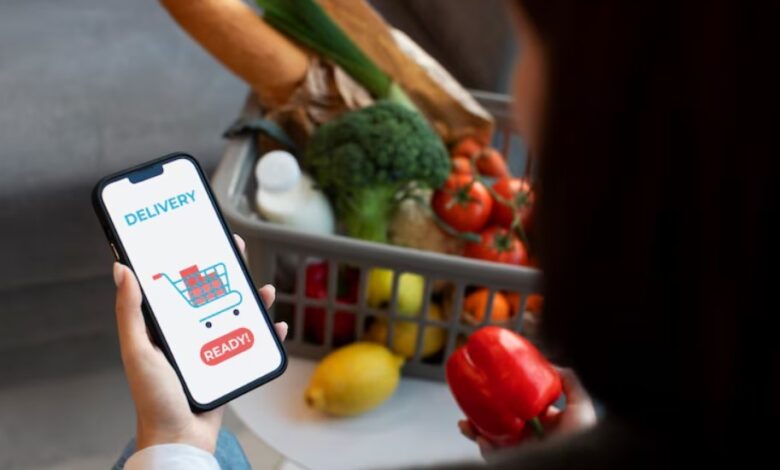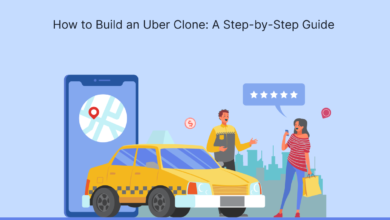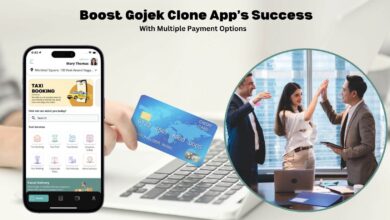Getir Clone App Development: Build a Fast & Scalable Grocery Delivery Platform

The grocery delivery industry has evolved significantly over the past few years, moving from scheduled orders to real-time, instant delivery. Consumers now expect groceries to arrive at their doorstep within minutes, not hours. In response, businesses are looking to develop technology-driven platforms that mirror the rapid delivery model popularized by Getir. This is where a Getir Clone App enters the picture—offering businesses a shortcut to entering the competitive quick-commerce market with a proven framework.
Whether you’re a startup or a retail chain, building a fast and scalable grocery delivery platform is no longer optional—it’s essential for relevance and revenue growth. This article walks you through the why, what, and how of developing your own app in this domain.
The Rise of Ultra-Fast Grocery Delivery
Today’s consumers are increasingly time-starved. With the growth of remote work and busy urban lifestyles, people are willing to pay more for speed and convenience. Quick-commerce platforms like Getir have capitalized on this by offering groceries and essentials in under 15 minutes.
These platforms leverage hyperlocal inventories, smart dispatch systems, and real-time tracking to provide instant gratification. For entrepreneurs and retail businesses looking to join this booming trend, launching a solution similar to Getir is a strategic opportunity to claim a slice of a rapidly growing market.
What Is a Getir Clone App?
A Getir Clone App is a custom-built grocery delivery platform designed to replicate the functionality and efficiency of Getir. It includes features like real-time inventory access, one-click ordering, and rapid delivery capabilities. But unlike a direct copy, a clone app can be personalized to suit specific business goals, regions, and customer demographics.
Instead of building from scratch, a Getir-like architecture helps you reduce development time while ensuring the app aligns with user expectations of speed, simplicity, and accuracy. It’s a flexible approach that can scale with your operations as you grow.
Key Features That Make It Work
The success of any grocery delivery app lies in its ability to deliver a seamless, intuitive experience. Here are the foundational features every fast-delivery grocery platform should have:
- Live Inventory Management: Keeps your stock in sync with user demand, reducing cart abandonment due to unavailable products.
- Optimized Delivery Routes: Uses geolocation and traffic data to determine the fastest path for each order.
- In-App Notifications: Real-time alerts keep users informed about order status, delivery ETA, and promotions.
- Multi-Payment Integration: Supports credit/debit cards, digital wallets, and cash on delivery.
- Analytics Dashboard: Gives admins real-time insights into order volume, delivery time, and customer behavior.
When building a Getir Clone App, these features can be refined or expanded based on your business model and regional market dynamics.
Choosing the Right Technology Stack
Speed and scalability require more than just a good UI. The backend infrastructure must be built for performance, especially when handling hundreds of concurrent orders. A typical stack may include:
- Backend: Node.js or Laravel for handling API calls efficiently
- Frontend: Flutter or React Native to support Android and iOS with a single codebase
- Database: PostgreSQL or Firebase for storing customer, inventory, and order data
- Cloud Hosting: AWS or Google Cloud for high availability and scalability
- Real-Time Features: WebSockets or MQTT for live updates on delivery tracking
The technology choices you make directly impact how your Getir Clone App performs during peak hours and how easily it can expand to new locations.
Step-by-Step Development Process
Launching a powerful grocery delivery platform involves multiple stages. Here’s a proven roadmap to follow:
1. Market Discovery and Strategy
Start by analyzing the local grocery delivery landscape. Identify key pain points customers face with existing services and how your platform can solve them faster or better.
2. Define the Core User Flow
Design the ideal journey for each user type—customers, delivery agents, and store managers. This clarity will guide the development of intuitive interfaces and essential features.
3. Build and Test the MVP
Develop a minimum viable product to test your app in a real environment. Focus on performance and essential functions, ensuring smooth browsing, ordering, and delivery workflows.
4. Conduct Pilot Runs
Launch in a limited area with a controlled group of users. Collect real-time feedback and fine-tune performance before expanding.
5. Roll Out the Full Version
After optimizing key elements, release the complete app to the market. Promote it with introductory offers, influencer campaigns, and referral programs to drive traction.
Using a Getir Clone App architecture enables you to fast-track this process without compromising on quality or reliability.
Why Build an App Like Getir?
There are numerous advantages to entering the instant grocery delivery space with an app like Getir. First and foremost, the model supports high customer retention because users get what they need immediately. Additionally, it reduces dependency on brick-and-mortar infrastructure, enabling rapid expansion in urban zones.
Retailers can also benefit from better inventory turnover and deeper consumer insights. For example, when orders are placed and fulfilled in real time, businesses can analyze purchasing patterns more accurately and adjust product availability dynamically.
An app like Getir also supports integration with local stores, creating a hyperlocal delivery ecosystem that benefits both customers and small businesses.
Smart Monetization Strategies
A fast grocery delivery app opens up several revenue streams:
- Service Fees: Add a flat or percentage-based fee on each order.
- Subscription Models: Offer priority deliveries and discounts to users who sign up for a monthly plan.
- Vendor Commissions: Partner with grocery stores and charge a percentage on each sale.
- Advertising: Provide paid visibility for brands or local merchants within the app.
As your Getir Clone App scales, these income channels can be optimized for different audience segments and market conditions.
Read also:- The Future of Food Safety: Embracing Next-Gen Technologies
Overcoming Key Challenges
While the opportunity is enormous, it’s important to prepare for common roadblocks:
- Maintaining Delivery Speed: Mitigated with efficient rider dispatch systems and real-time tracking.
- Ensuring Product Freshness: Solved through tight coordination with inventory and frequent quality audits.
- Customer Retention: Enhanced through loyalty rewards, seamless reordering, and top-notch support.
- Compliance and Data Security: Addressed by adhering to GDPR and using secure payment protocols.
Addressing these issues from the ground up will strengthen the foundation of your platform and enhance user trust.
Conclusion
The future of grocery shopping is fast, digital, and location-independent. Building a Getir Clone App gives you the tools to create a scalable, responsive, and consumer-friendly delivery service that aligns with modern expectations. Whether you’re serving one neighborhood or an entire city, the potential for growth is tremendous if the app is thoughtfully developed and efficiently executed.
An app like Getir isn’t just about replicating a model—it’s about adapting a successful concept to your unique business environment and turning it into a growth engine. Now is the time to move beyond the traditional model and lead the shift toward instant, tech-enabled grocery delivery.





